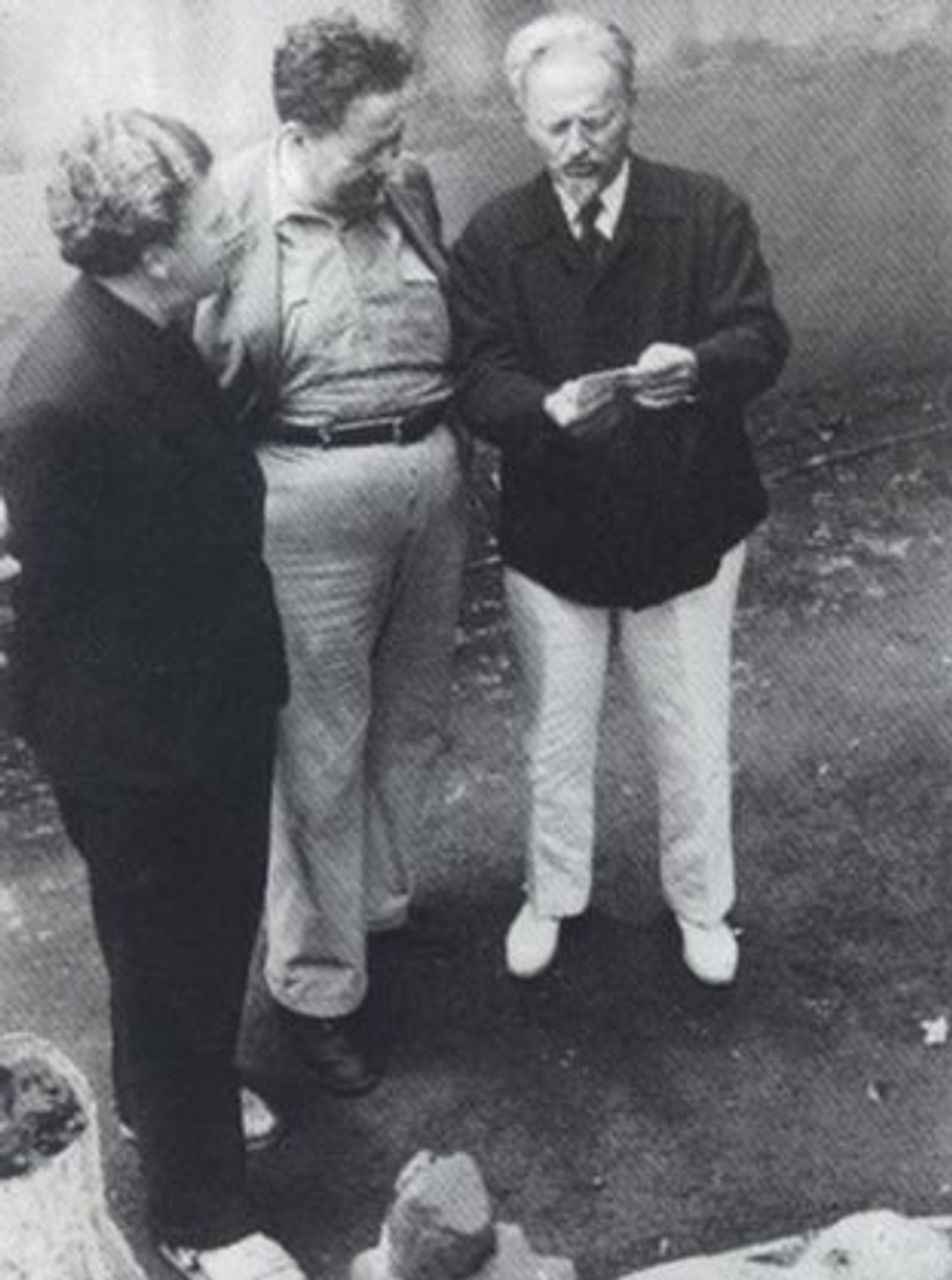 Andre Breton, Diego Rivera and Leon Trotsky in Mexico
Andre Breton, Diego Rivera and Leon Trotsky in MexicoIn his June 1938 article, “Art and Politics in Our Epoch,” Leon Trotsky discussed the work of Mexican painter and muralist Diego Rivera, who was at that time in political sympathy with the Fourth International.
Trotsky first addressed what he had termed the “concentration camp” of artistic life that had been established by the Stalinist regime in the Soviet Union in the 1930s. He asked: “What can one hope for or demand of artists who are forced to follow with their brushes the crude lines of what they themselves realize is a historical falsification?”
Trotsky continued:
“The style of present-day official Soviet painting is called ‘socialist realism.’ The name itself has evidently been invented by some high functionary in the department of the arts. This ‘realism’ consists in the imitation of provincial daguerreotypes of the third quarter of the last century; the ‘socialist’ character apparently consists in representing, in the manner of pretentious photography, events which never took place. It is impossible to read Soviet verse and prose without physical disgust, mixed with horror, or to look at reproductions of paintings and sculpture in which functionaries armed with pens, brushes, and scissors, under the supervision of functionaries armed with Mausers, glorify the ‘great’ and ‘brilliant’ leaders, actually devoid of the least spark of genius or greatness. The art of the Stalinist period will remain as the frankest expression of the profound decline of the proletarian revolution.
“This state of things is not confined, however, within the frontiers of the USSR. Under the guise of a belated recognition of the October revolution, the ‘left’ wing of the Western intelligentsia has fallen on its knees before the Soviet bureaucracy. As a rule, those artists with some character and talent have kept aloof. But the appearance in the first ranks, of the failures, careerists and nobodys is all the more unfortunate. A rash of Centers and Committees of all sorts has broken out, of secretaries of both sexes, inevitable letters from [French writer] Romain Rolland, subsidized editions, banquets and congresses, in which it is difficult to trace the line of demarcation between art and the GPU [Stalinist secret police]. Despite this vast spread of activity, this militarized movement has not produced one single work that was able to outlive its author or its inspirers of the Kremlin.
“In the field of painting, the October revolution has found her greatest interpreter not in the USSR but in faraway Mexico, not among the official ‘friends,’ but in the person of a so-called ‘enemy of the people’ whom the Fourth International is proud to number in its ranks. Nurtured in the artistic cultures of all peoples, all epochs, Diego Rivera has remained Mexican in the most profound fibres of his genius. But that which inspired him in these magnificent frescoes, which lifted him up above the artistic tradition, above contemporary art in a certain sense, above himself, is the mighty blast of the proletarian revolution. Without October, his power of creative penetration into the epic of work, oppression and insurrection, would never have attained such breadth and profundity. Do you wish to see with your own eyes the hidden springs of the social revolution? Look at the frescoes of Rivera. Do you wish to know what revolutionary art is like? Look at the frescoes of Rivera.
“Come a little closer and you will see clearly enough, gashes and spots made by vandals: Catholics and other reactionaries, including of course, Stalinists. These cuts and gashes give even greater life to the frescoes. You have before you, not simply a ‘painting,’ an object of passive esthetic contemplation, but a living part of the class struggle. And it is at the same time a masterpiece!
“Only the historical youth of a country which has not yet emerged from the stage of struggle for national independence, has allowed Rivera’s revolutionary brush to be used on the walls of the public buildings of Mexico. In the United States it was more difficult. Just as the monks in the Middle Ages, through ignorance, it is true, erased antique literary productions from parchments to cover them with their scholastic ravings, just so Rockefeller’s lackeys, but this time maliciously, covered the frescoes of the talented Mexican with their decorative banalities. This recent palimpsest will conclusively show future generations the fate of art degraded in a decaying bourgeois society.
“The situation is no better, however, in the country of the October revolution. Incredible as it seemed at first sight, there was no place for the art of Diego Rivera, either in Moscow, or in Leningrad, or in any other section of the USSR where the bureaucracy born of the revolution was erecting grandiose palaces and monuments to itself. And how could the Kremlin clique tolerate in its kingdom an artist who paints neither icons representing the ‘leader’ nor life-size portraits of [Stalinist official Kliment] Voroshilov’s horse? The closing of the Soviet doors to Rivera will brand forever with an ineffaceable shame the totalitarian dictatorship.”
David North visited Trotsky’s final residence during his exile (1929-33) on the island of Prinkipo, and paid tribute to the life of the great theorist of world socialist revolution.
